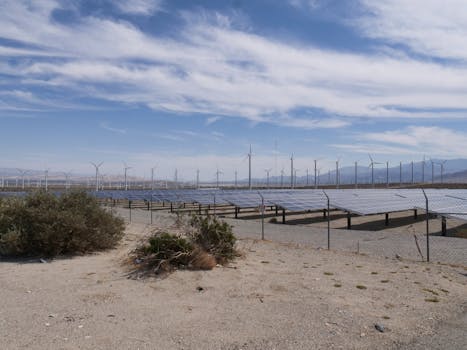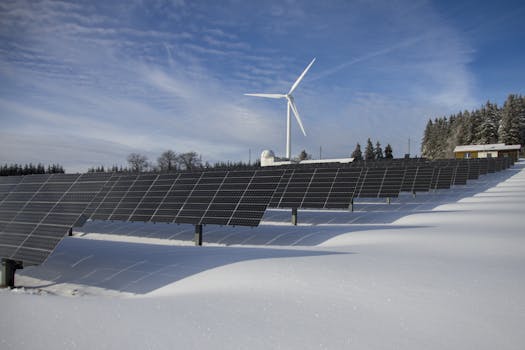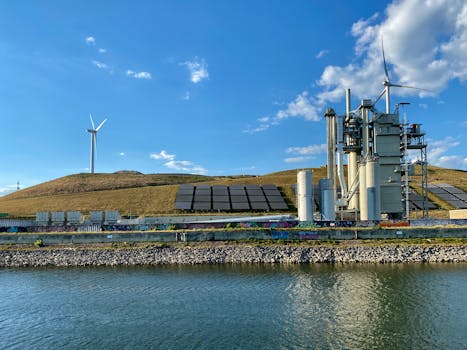
Renewable Energy Technology and Sustainability Breakthroughs
Renewable Energy Technology and Sustainability are revolutionizing the way we live and interact with the environment. With the increasing concern about climate change and environmental degradation, the need for sustainable and renewable energy sources has never been more pressing. In this article, we will explore the latest breakthroughs in renewable energy technology and sustainability, and how they are transforming the world.
Section 1: Introduction to Renewable Energy Technology

Renewable energy technology refers to the use of natural resources such as solar, wind, and hydro power to generate energy. These sources of energy are sustainable, meaning they can be replenished naturally, and are a cleaner alternative to fossil fuels. The benefits of renewable energy technology are numerous, including reduced greenhouse gas emissions, improved air quality, and enhanced energy security.
One of the most significant breakthroughs in renewable energy technology is the development of more efficient solar panels. Solar panels convert sunlight into electricity, and advancements in technology have increased their efficiency and reduced their cost. This has made solar energy a more viable option for households and businesses, and has contributed to the growth of the renewable energy industry.
Section 2: Advances in Wind Energy Technology

Wind energy is another significant source of renewable energy, and advancements in technology have improved its efficiency and effectiveness. Larger, more efficient turbines have been developed, which can generate more electricity from the same amount of wind. Additionally, advancements in materials and design have reduced the cost of wind turbines, making them a more competitive option with fossil fuels.
Another significant breakthrough in wind energy technology is the development of offshore wind farms. These wind farms are located in the ocean, where the wind is stronger and more consistent, and can generate more electricity than traditional land-based wind farms. Offshore wind farms also have the potential to reduce visual pollution and minimize the impact on wildlife habitats.
Section 3: Hydro Power and Geothermal Energy

Hydro power is a significant source of renewable energy, and advancements in technology have improved its efficiency and effectiveness. Hydroelectric power plants can generate electricity from the energy of moving water, and are a reliable and constant source of power. Additionally, advancements in materials and design have reduced the cost of hydroelectric power plants, making them a more competitive option with fossil fuels.
Geothermal energy is another significant source of renewable energy, which involves harnessing the heat from the earth to generate electricity. Geothermal power plants can be located near volcanoes or other areas with significant geological activity, and can provide a reliable and constant source of power. Advancements in technology have improved the efficiency and effectiveness of geothermal power plants, and have reduced their cost.
Section 4: Sustainable Practices and Energy Efficiency

Sustainable practices and energy efficiency are critical components of renewable energy technology and sustainability. Sustainable practices involve reducing waste and minimizing the impact of human activity on the environment. Energy efficiency involves using less energy to achieve the same outcome, and can be achieved through the use of energy-efficient appliances and lighting.
One of the most significant breakthroughs in sustainable practices is the development of smart grids. Smart grids are advanced energy management systems that can monitor and control energy usage in real-time, reducing waste and optimizing energy efficiency. Smart grids can also integrate renewable energy sources, such as solar and wind power, into the energy grid, providing a more sustainable and reliable source of energy.
Conclusion

In conclusion, renewable energy technology and sustainability are transforming the world, providing a cleaner, more sustainable, and more reliable source of energy. Breakthroughs in solar, wind, hydro, and geothermal energy have improved the efficiency and effectiveness of these sources, and have reduced their cost. Sustainable practices and energy efficiency are critical components of renewable energy technology, and involve reducing waste and minimizing the impact of human activity on the environment. As technology continues to advance, we can expect to see even more innovative solutions to the world’s energy needs, and a more sustainable future for generations to come.






